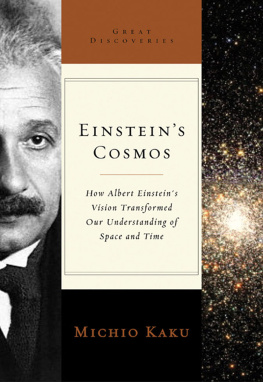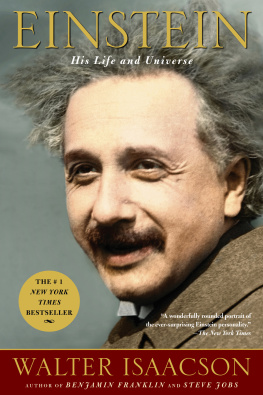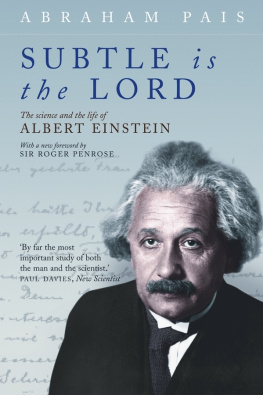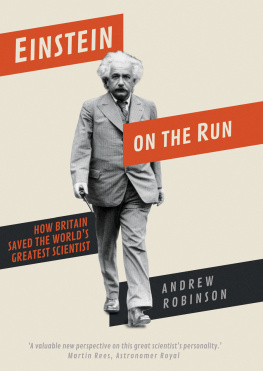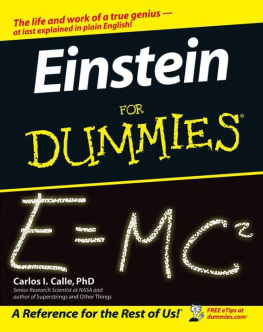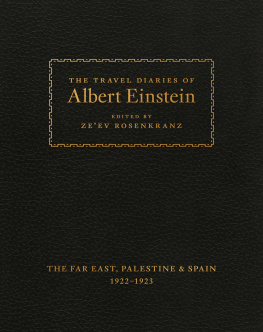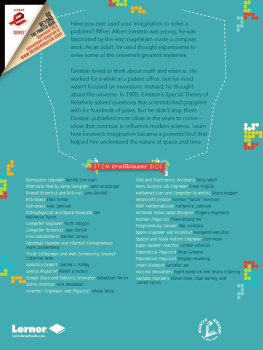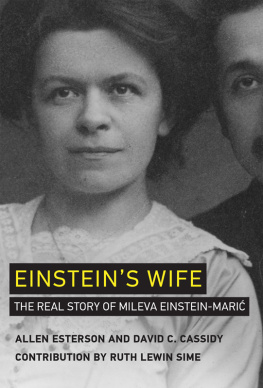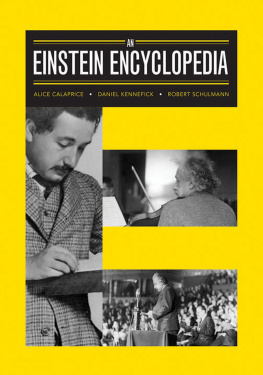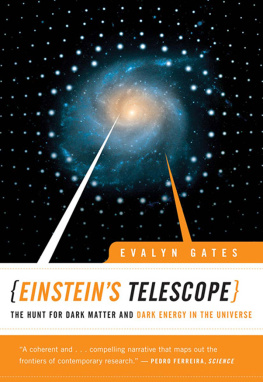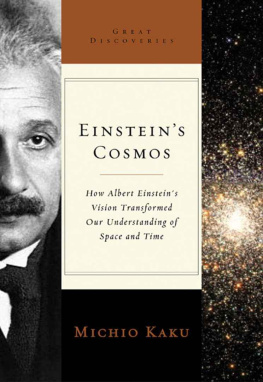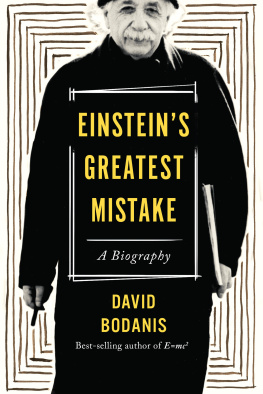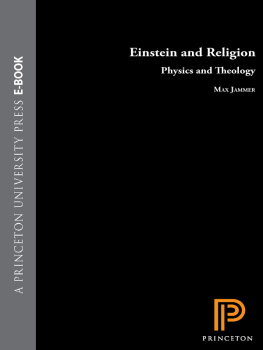Einsteins Cosmos
PUBLISHED TITLES IN THE GREAT DISCOVERIES SERIES
David Foster Wallace: Everything and More: A Compact History of 
Sherwin B. Nuland: The Doctors Plague: Germs, Childbed Fever, and the Strange Story of Ignc Semmelweis
Michio Kaku: Einsteins Cosmos: How Albert Einsteins Vision Transformed Our Understanding of Space and Time
Barbara Goldsmith: Obsessive Genius: The Inner World of Marie Curie
Rebecca Goldstein: Incompleteness: The Proof and Paradox of Kurt Godel
FORTHCOMING TITLES
George Johnson on Hubble and the Measurement of the Universe
Daniel Mendelsohn on Archimedes and the Science of the Ancient Greeks
Richard Reeves on Rutherford and the Atom
Madison Smartt Bell on Lavoisier and Modern Chemistry
David Leavitt on Alan Turing and the Computer
William T. Vollman on Copernicus and the Copernican Revolution
David Quammen on Darwin and Evolution
G ENERAL E DITORS : E DWIN B ARBER AND J ESSE C OHEN
BY MICHIO KAKU
Beyond Einstein
Hyperspace
Visions
Einsteins Cosmos
Parallel Worlds

MICHIO KAKU
Einsteins Cosmos
How Albert Einsteins Vision Transformed Our Understanding of Space and Time


W. W. NORTON & COMPANY
NEW YORK LONDON
Copyright 2004 by Michio Kaku
All rights reserved
For information about permission to reproduce selections from this book, write to Permissions, W. W. Norton & Company, Inc., 500 Fifth Avenue, New York, NY 10110
Library of Congress Cataloging-in-Publication Data
Kaku, Michio.
Einstein's cosmos : how Albert Einstein's vision transformed our understanding of space and time / Michio Kaku.1st ed.
p. cm.(Great discoveries)
Includes bibliographical references.
1. Space and time. 2. Relativity (Physics) 3. Einstein, Albert, 18791955.
I. Title. II. Series.
QC173.59.S65 K356 2004
530.11dc22
2003025580
ISBN: 978-0-393-07783-4
Atlas Books, LLC, 65 E. 55th Street, New York, N.Y. 10022
W. W. Norton & Company, Inc., 500 Fifth Avenue, New York, N.Y. 10110 www.wwnorton.com
W. W. Norton & Company Ltd., Castle House, 75/76 Wells Street, London W1T 3QT
This book is dedicated to Michelle and Alyson.
Contents
PREFACE
A New Look at the Legacy of Albert Einstein
G enius. Absent-minded professor. The father of relativity. The mythical figure of Albert Einsteinhair flaming in the wind, sockless, wearing an oversized sweatshirt, puffing on his pipe, oblivious to his surroundingsis etched indelibly on our minds. A pop icon on a par with Elvis Presley and Marilyn Monroe, he stares enigmatically from postcards, magazine covers, T-shirts, and larger-than-life posters. A Beverly Hills agent markets his image for television commercials. He would have hated it all, writes biographer Denis Brian.
Einstein is among the greatest scientists of all time, a towering figure who ranks alongside Isaac Newton for his contributions. Not surprisingly, Time magazine voted him the Person of the Century. Many historians have placed him among the hundred most influential people of the last thousand years.
Given his place in history, there are several reasons for trying to make a fresh new effort to re-examine his life. First, his theories are so deep and profound that the predictions he made decades ago are still dominating the headlines, so it is vital that we try to understand the roots of these theories. As a new generation of instruments that were inconceivable in the 1920s (e.g., satellites, lasers, supercomputers, nanotechnology, gravity wave detectors) probe the outer reaches of the cosmos and the interior of the atom, Einsteins predictions are winning Nobel Prizes for other scientists. Even the crumbs off Einsteins table are opening up new vistas for science. The 1993 Nobel Prize, for example, went to two physicists who indirectly confirmed the existence of gravity waves, predicted by Einstein in 1916, by analyzing the motion of double neutron stars in the heavens. Also, the 2001 Nobel Prize went to three physicists who confirmed the existence of Bose-Einstein condensates, a new state of matter existing near absolute zero that Einstein predicted in 1924.
Other predictions are now being verified. Black holes, once considered a bizarre aspect of Einsteins theory, have now been identified by the Hubble Space Telescope and the Very Large Array Radio Telescope. Einstein rings and Einstein lenses not only have been confirmed but also are key tools astronomers use to measure invisible objects in outer space.
Even Einsteins mistakes are being recognized as profound contributions to our knowledge of the universe. In 2001, astronomers found convincing evidence that the cosmological constant, thought to be Einsteins greatest blunder, actually contains the largest concentration of energy in the universe and will determine the ultimate fate of the cosmos itself. So experimentally, there has been a renaissance in Einsteins legacy as more evidence piles up verifying his predictions.
Second, physicists are re-evaluating his legacy and especially his thinking process. While recent biographies have minutely examined his private life for clues to the origins of his theories, physicists are becoming increasingly aware that Einsteins theories are based not so much on arcane mathematics (let alone his love life!) but simple and elegant physical pictures. Einstein would often comment that if a new theory was not based on a physical image simple enough for a child to understand, it was probably worthless.
In this book, therefore, these pictures, these products of Einsteins scientific imagination, become a formal organizing principle around which his thinking process and his greatest achievements are described.
Part I uses the picture that Einstein first thought of when he was sixteen years old: what a light beam would look like if he could race alongside it. This picture, in turn, was probably inspired by a childrens book that he read. By visualizing what happens if he were to race a light beam, Einstein isolated the key contradiction between the two great theories of the time, Newtons theory of forces and Maxwells theory of fields and light. In the process of resolving this paradox, he knew that one of these two great theoriesNewtons, as it turns outmust fall. In some sense, all of special relativity (which would eventually unlock the secret of the stars and nuclear energy) is contained in this picture.
In Part II, we are introduced to another picture: Einstein imagined planets as marbles rolling around a curved surface centered at the sun, as an illustration of the idea that gravity originates from the bending of space and time. By replacing the forces of Newton with the curvature of a smooth surface, Einstein gave an entirely fresh, revolutionary picture of gravity. In this new framework, the forces of Newton were an illusion caused by the bending of space itself. The consequences of this simple picture would eventually give us black holes, the big bang, and the ultimate fate of the universe itself.
Part III doesnt have a picturethis section is more about the failure to come up with an image guiding his unified field theory, one that would have given Einstein a way to formulate the crowning achievement of two thousand years of investigation into the laws of matter and energy. Einsteins intuition began to falter, as almost nothing was known in his time about the forces that governed the nucleus and subatomic particles.

